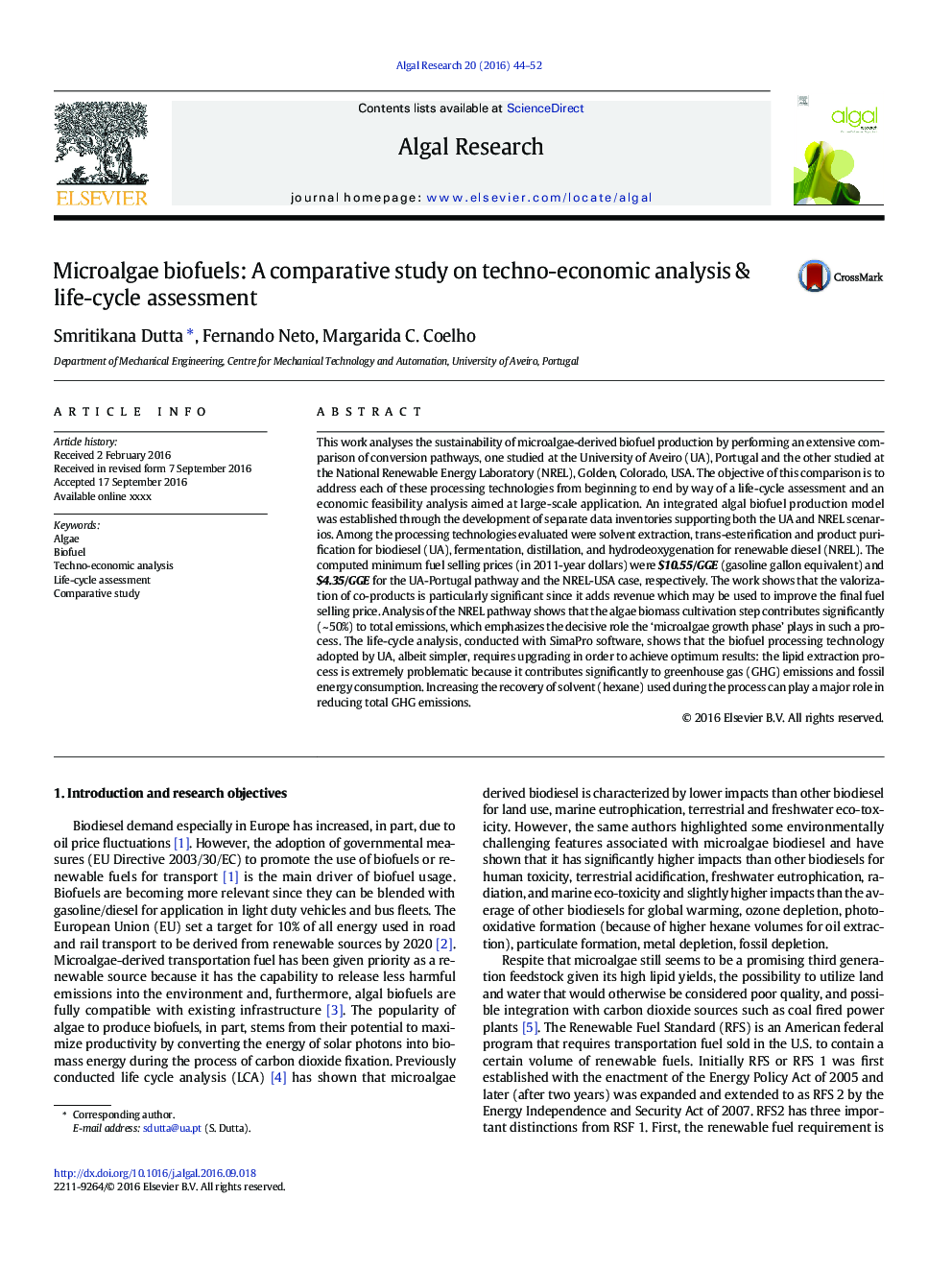| کد مقاله | کد نشریه | سال انتشار | مقاله انگلیسی | نسخه تمام متن |
|---|---|---|---|---|
| 5478598 | 1521812 | 2016 | 9 صفحه PDF | دانلود رایگان |
عنوان انگلیسی مقاله ISI
Microalgae biofuels: A comparative study on techno-economic analysis & life-cycle assessment
دانلود مقاله + سفارش ترجمه
دانلود مقاله ISI انگلیسی
رایگان برای ایرانیان
کلمات کلیدی
موضوعات مرتبط
مهندسی و علوم پایه
مهندسی انرژی
انرژی های تجدید پذیر، توسعه پایدار و محیط زیست
پیش نمایش صفحه اول مقاله

چکیده انگلیسی
This work analyses the sustainability of microalgae-derived biofuel production by performing an extensive comparison of conversion pathways, one studied at the University of Aveiro (UA), Portugal and the other studied at the National Renewable Energy Laboratory (NREL), Golden, Colorado, USA. The objective of this comparison is to address each of these processing technologies from beginning to end by way of a life-cycle assessment and an economic feasibility analysis aimed at large-scale application. An integrated algal biofuel production model was established through the development of separate data inventories supporting both the UA and NREL scenarios. Among the processing technologies evaluated were solvent extraction, trans-esterification and product purification for biodiesel (UA), fermentation, distillation, and hydrodeoxygenation for renewable diesel (NREL). The computed minimum fuel selling prices (in 2011-year dollars) were $10.55/GGE (gasoline gallon equivalent) and $4.35/GGE for the UA-Portugal pathway and the NREL-USA case, respectively. The work shows that the valorization of co-products is particularly significant since it adds revenue which may be used to improve the final fuel selling price. Analysis of the NREL pathway shows that the algae biomass cultivation step contributes significantly (~Â 50%) to total emissions, which emphasizes the decisive role the 'microalgae growth phase' plays in such a process. The life-cycle analysis, conducted with SimaPro software, shows that the biofuel processing technology adopted by UA, albeit simpler, requires upgrading in order to achieve optimum results: the lipid extraction process is extremely problematic because it contributes significantly to greenhouse gas (GHG) emissions and fossil energy consumption. Increasing the recovery of solvent (hexane) used during the process can play a major role in reducing total GHG emissions.
ناشر
Database: Elsevier - ScienceDirect (ساینس دایرکت)
Journal: Algal Research - Volume 20, December 2016, Pages 44-52
Journal: Algal Research - Volume 20, December 2016, Pages 44-52
نویسندگان
Smritikana Dutta, Fernando Neto, Margarida C. Coelho,